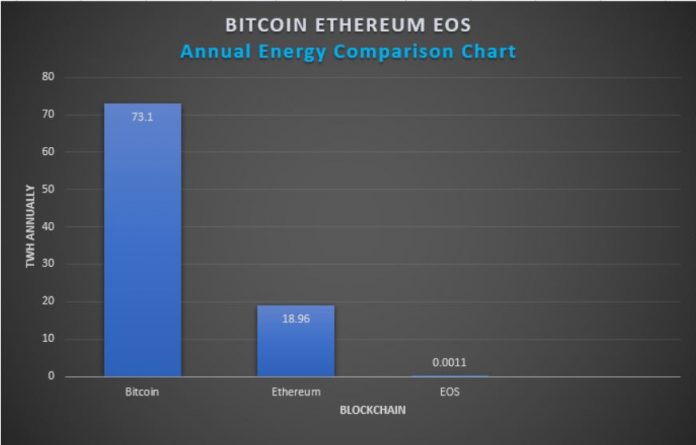As the world’s focus veer towards sustainability and maintaining a greener environment, high energy consumption is becoming one of its primary concerns. Energy consumption, as we know it, is synonymous with crypto mining.
As important as crypto mining is to the crypto space, its high level of electricity consumption is one of the reasons the crypto space is being criticised in several parts of the world. Energy consumption is, however, not the same in mining different cryptocurrenies.
This is because mining is done based on the blockchain protocols used in different cryptocurrencies. Bitcoin, for instance, uses Proof-of-Work (PoW) as its protocol and is widely a bull-dog in electricity consumption.
In fact, some reports indicate that the energy consumed by a single Bitcoin transaction can power an average of 1.57 households in the US. This is a major concern for people as the crypto space is ever expanding with which crypto mining is directly proportional.
This issue seems have found a roundabout solution as some cryptocurrencies uses the Proof of Stake (PoS) for mining. EOS, for example, was built uses a Delegated Proof of Stake protocol (DPoS) with which it boasts of better energy conservation compared to Bitcoin and Ethereum.
Energy Consumption in Bitcoin and Ethereum
Ranked the largest and 2nd largest in market cap, mining and transactions are based on the PoW protocol. For Bitcoin, energy consumption is the highest with which mining is not cost-efficient.
A recent research pointed out that an average of 73.12 TWh (Terra Watt hour) is consumed annually by Bitcoin and though Ethereum boasts of a significantly lower energy consumption, it still guzzles a high levels of electricity (18.96 TWh).
However, with EOS thrown into the loop, there are indicators that the EOS blockchain is an advocate of a greener environment as the research indicate that it is 66,000 times more energy-efficient when compared to Bitcoin.
Energy Consumption in EOS
With EOS based on the PoS protocol and major transactions based on its 21 fixed block produccers along with 53 standby producers, energy consumption is relatively lower. This is because the average energy consumed by a block producer in a day is 1.8KW.
Hence, on assumption that all 74 are voted in by token holders for transactions, simple arithmetic shows that 3196 KWh will be needed per day for EOS transactions. In an annual convention, an average of 1,137,776 KWh which is approximately 0.0011TWh will be used.
Roundabout calculations and weighing against Bitcoin and Ethereum shows that EOS is about 66,450 times and 17,236 more energy-efficient than Bitcoin and Ethereum respectively. Though this results put the EOS blockchain in a good light, recent reports show that there is still a lot to be worked on by the coin’s dev team.
As previously reported, a report weighing the potential of EOS as a viable challenger of Ethereum in the dApp world by BitMEX showed that there was indeed a lot to be worked on for the coin. However, with its mining protocol a major victory, further improvements could mean mass adoption in the future.




